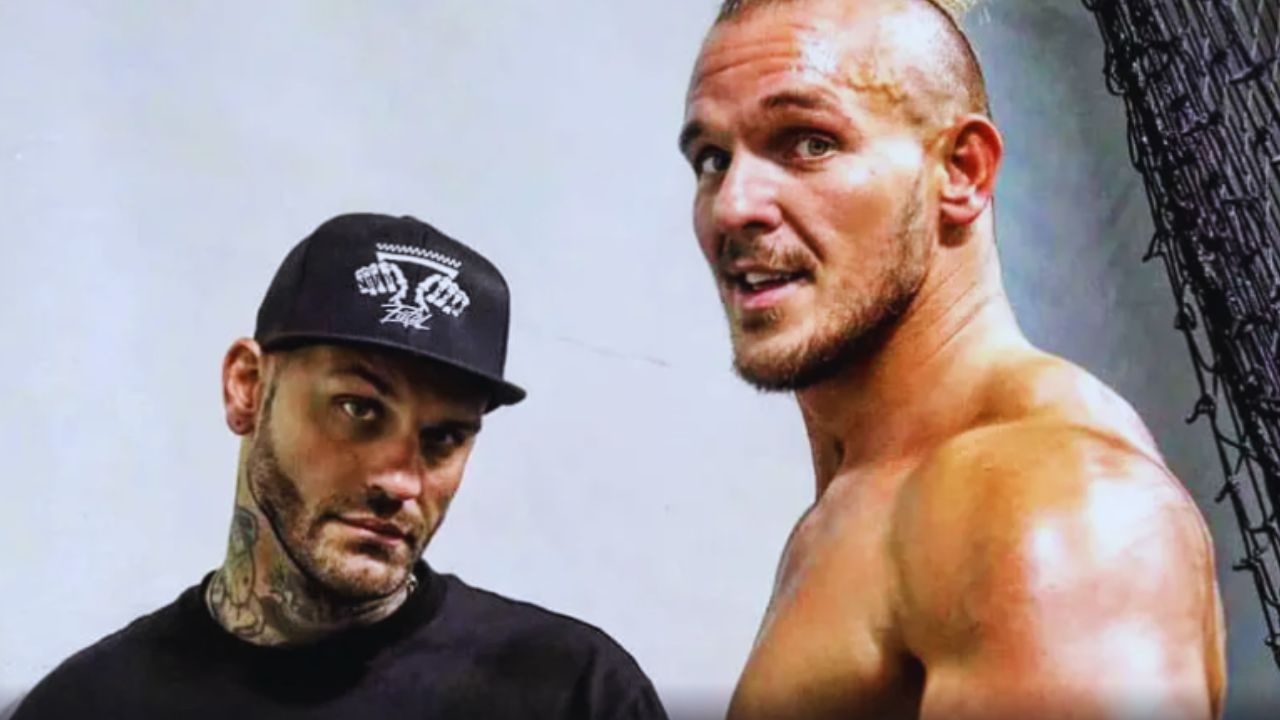In the high-octane world of professional wrestling, the line between entertainment and real-life risk is often frighteningly thin. This fact was brought home recently when former WWE wrestler Corey Graves criticized a particularly dangerous move during a match at AEW Dynamite, prompting the wrestlers to react to an emotional incident in which Graves’ brother Sam Adonis came forward as he’s going to wrestle inside, in that real wrestling match with professionalism. highlighting the claims
The Incident
The feud arose during the Blood and Throat match between Team AEW and Team Elite at the July 24 AEW Dynamite. In one dramatic and brutal scene, boxer Jack Perry, chained in a cage, took an unsafe chair shot from Darby Allyn to the head. The news caused immediate concern among fans and activists alike. Many hoped the seats were a “gimmick,” a boxing term for accessories designed to be realistic but cause few problems. However, there was widespread belief that the chair shot was authentic, leading to a lively debate about boxing safety.
Cory Graves says
Corey Graves, whose promising boxing career was tragically cut short by a head injury, did not remain silent. He took to social media and expressed serious concern about the place. Graves highlighted the serious long-term risks associated with such practices, including chronic traumatic encephalopathy (CTE), a brain condition associated with multiple head traumas.
In his heartfelt submission, Graves wrote:
“This is not supposed to sound judgmental, incite ‘us vs. them’ or query each person’s ardour, skills, or intentions. This is simply coming from a guy whose career ended with a few too many accidental headshots. The art of this business is shielding ourselves and each other. Trust me, the gaps in memory aren’t worth it. I promise.”
Despite his attempt to foster communication on safety, Graves’ comments had been met with sizable backlash, forcing him to delete his tweet. Critics accused him of overstepping and inflicting useless duties in the wrestling community.
Sam Adonis Defends His Brother
Amid the controversy, Graves’ brother, Sam Adonis, a wrestler himself, got to his defense. Adonis took to Twitter to argue that Corey’s concerns were both valid and crucial, especially given his firsthand experience with career-ending accidents.
Adonis tweeted:
“Crazy to think that people are mad at @WWEGraves for stating the obvious! Imagine dropping the entirety of what you’ve ever labored for due to a colleague’s mistake. Now believe seeing other colleagues make the same mistake intentionally? Wouldn’t you chime in too? 🤔 Knowledge > Opinion”
Adonis highlighted the emotional and expert toll that such accidents can take on wrestlers. His defense of Corey underscores a broader difficulty in the wrestling enterprise: the need for a balance between thrilling enjoyment and the health and protection of its performers.
Crazy to think that people are mad at @WWEGraves for stating the obvious!
Imagine losing everything you’ve ever worked for due to a colleague’s mistake.
Now imagine seeing other colleagues making the same mistake deliberately?
Wouldn’t you chime in too?🤔
Knowledge>Opinion
— Sam Adonis (@RealSamAdonis) July 25, 2024
Industry Response
The incident has reignited the controversy about the use of dangerous spots in wrestling. While some lovers and professionals recognize the adrenaline-pumping movement, others argue that the dangers are too remarkable. Chair shots to the pinnacle, specifically, had been a contentious topic due to their affiliation with CTE and different severe accidents.
Interestingly, regardless of the backlash, AEW President Tony Khan defended the spot, affirming that the chair used was changed into a gimmicked to reduce damage. However, this protection did little to quell the issues of people who believe that even gimmicked chair pictures are too risky.
Moving Forward
The debate over protection in expert wrestling is unlikely to be resolved quickly. However, the incident regarding Corey Graves and the following protection by using his brother Sam Adonis have brought crucial issues to the forefront. As the enterprise keeps evolving, it should grapple with the dual imperatives of supplying exciting entertainment while safeguarding the well-being of its performers.
For Corey Graves, the fight for safer wrestling practices is deeply private. His career-ending injuries serve as a stark reminder of the potential outcomes of ignoring safety. As the wrestling network debates the satisfactory direction forward, the voices of those who’ve lived through the risks, like Graves and Adonis, should be heard and revered.




